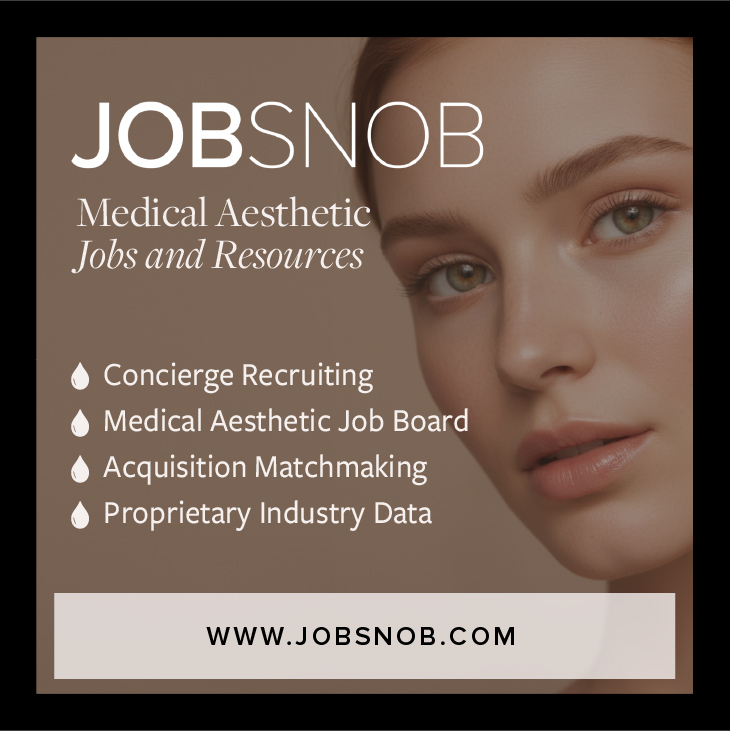
Business
How to Build Your 2026 Med Spa Marketing Plan
By Medical Marketing WhizAs the year comes to a close, now is the perfect time to reflect on what’s working—and ...

Show your committment to patient safety, legal compliance and community over competition.
AmSpa members receive preferred pricing on all AmSpa live and virtual trainings.
Get the latest news and information about safe, legal practice in medical aesthetics directly in your inbox.
Get access to med spa laws, in-person and online training and more!
Posted By Madilyn Moeller, Thursday, January 4, 2024

From a consumer perspective, medical spa treatments are in higher demand than ever before. Whether seeking injections such as neuromodulators, laser treatments or body contouring, medical spas across the country see an average of 283 non-surgical aesthetic patient visits per month. Even more interestingly, 65% of those are repeat patients. When analyzing trends in consumer behavior or growth in the industry, it may seem like nearly any combination of medical spa services will generate revenue.
However, successful medical spa owners and buyers analyze the medical spa service mix through a more strategic lens. What makes for a successful service mix? Here are some factors to consider for each service:
Find out more about how to open a successful and profitable medical spa practice.
Understanding the nuances of the most popular medical spa treatments can help owners build out a healthy service mix with multiple revenue streams and higher profit potential.
First, consider the margin profiles of the most popular non-surgical aesthetic treatments (ranked highest to lowest).
Lasers (energy-based devices): Lasers have the most profitable margin perspective at medical spas for a few reasons. First, aesthetic lasers have become powerful and effective at spot-treating skin problems. They offer skin tightening and resurfacing, hair removal, collagen production, scar treatment and more, often with little to no downtime for patients. With compelling before-and-after photos to support marketing, laser treatments offer an attractive, non-invasive solution to a wide range of patients.
While many of these are one-time treatments (unlike injectables), medical spas can offer them at a higher price point. Lasers might seem like an expensive capital investment, but once a laser is paid off, virtually every treatment can be considered profit—you’re only using the machine itself rather than purchasing syringes of product. The payback period on a laser can be surprisingly short—often only seven to eight months, and sometimes even less. And training providers is typically easier for lasers than for injectables.
Body contouring: Similarly, body contouring treatments, such as Coolsculpting, can offer healthy margins to a medical spa’s service mix. With many similar benefits as lasers, the margins for body contouring treatments are lower than lasers because of a more competitive price point.
Injectables: We can break injectables into two categories: fillers and neurotoxins.

Fillers—Juvederm, Restylane and others—plump areas of the skin to add volume. Neurotoxins (Botox, Xeomin, Dysport) relax the muscles that cause wrinkles and lines to form. Fillers have slightly higher margins than neurotoxins.
Medical spas may price neurotoxins differently depending on their client base. A volume-based medical spa may charge $10 per unit, while premium pricing is closer to $12 or $13 (with a membership program that brings price down for VIP customers).
The price point, the fact that there can be more waste with injectables (product left over in the syringe) and more intensive training for talented injectors all lead to lower margins in this category. But, because injectable treatments are incredibly popular and also require repeated maintenance, these services are an important way to get new patients in the door and keep them coming back.
Retail: Finally, retail products, such as skin care products, offer another revenue opportunity for medical spas. While not the most crucial component of a medical spa’s bottom line, a retail purchase may be an add-on or follow up for a client after a treatment.
Most successful medical spas have built out a healthy suite of services. Beyond profit margins, they’ve considered their demographic, thoughtful pricing and membership strategies, and how to most effectively market and fill their schedules. In addition, savvy owners understand how to cross-sell services.
For example, Botox may be a service that brings clients through the door on a consistent basis. If so, is there a process for selling higher margin services? Are there benefits for members? Most successful practices do not rely on a single service (or provider) to bring in all the revenue. Just as much as the service mix itself, a practice’s ability to cross-sell or up-sell services is a key indicator of success.
Skytale Group’s medical aesthetics consultants and M&A advisors are experts at helping practices optimize their service mix to increase profits. Reach out to their team to learn more about how they can add lasting value to health care organizations through consulting, M&A advisory and investment banking.
Read these blogs to know more about the business strategies you need to run a successful and profitable medical aesthetics practice:
Skytale Group is a full-service strategic, financial, and M&A advisory firm. Through management strategy and financial analysis, Skytale helps start, grow, and sell organizations within the aesthetics space.
Certain principals of Skytale Group are licensed Investment Banking agents registered with Burch & Company, Inc. Services involving securities shall be performed by Burch. Skytale Group and Burch are unaffiliated entities.

Related Tags
Medical spa news, blogs and updates sent directly to your inbox.

Business
By Medical Marketing WhizAs the year comes to a close, now is the perfect time to reflect on what’s working—and ...

Business
By Eric Atienza, Assistant Director of Digital Marketing and Marketing TechnologyMore and more people are turning to med spas for ...

Business
By Obsidian Strategic ConsultingRunning a medical spa is about more than delivering great patient experiences. Behind every treatment is a ...

Clinical
By Belmar Pharma SolutionsRecently, Belmar Pharma Solutions partnered with NewBeauty, an authority on all things beauty, offering readers an in-depth ...